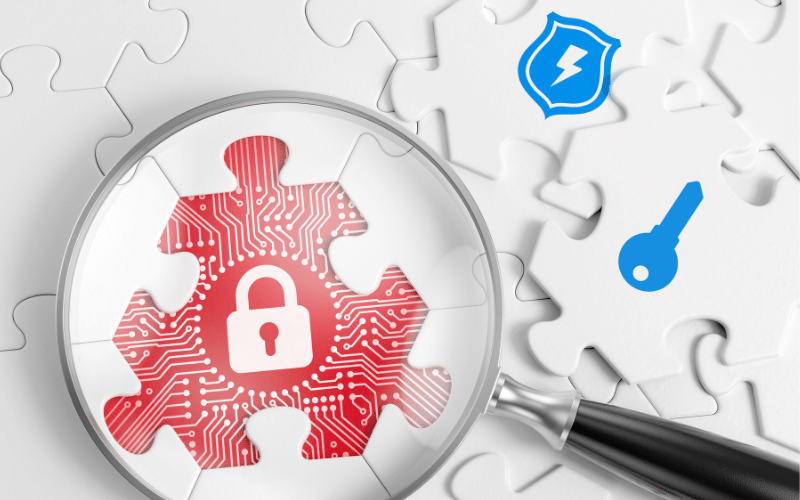Risk-Based Vulnerability Management Challenges & Solutions to Overcome Them

In today’s cyber landscape, efficient vulnerability management is a top priority. Organizations cannot afford to take chances with cyber-attacks on the rise and the increasing sophistication of malicious actors. Unfortunately many hold the wrong perspective of vulnerability management (VM) which can cause recurring security challenges and for organizations.
In many cases targeted threat actors or untargeted ransomware attackers take advantage of an organization’s inaction. They infiltrate a network to disrupt operations, primarily for financial gain. No company should handle these issues with a kid’s glove. Looking at today’s threatscape, RBVM is critical in knowing how to combat the menace of cyber threats.
Common Vulnerability Management Challenges & a Lasting Solution
1. Insufficient Asset Inventory: We all know how challenging it is to protect what you can’t see. One major factor facing most organizations is the incomplete asset inventory data at their disposal. At best, storage often occurs in obsolete spreadsheets or other methods. Unfortunately, the result is often incomplete or incorrect data. What organizations require is concise and up-to-the-minute data on their assets.
A company that utilizes robust asset inventory management solutions is on the road to successful vulnerability management. Asset inventories help to determine the scope of potential risks, and how to patch them safely. In-depth context on a company’s assets produces a formidable vulnerability analysis and prioritization. On the other hand, insufficiently detailed asset profiling can make the process rather cumbersome.
2. Inaccurate and Inefficient Prioritization of Vulnerabilities: Undoubtedly, most IT environments of organizations experience a large number of vulnerabilities. The threats range in scope and potential damage- which puts an arduous task on the security team to patch or fix. An essential factor to consider remains the exploitation or value of an asset. Therefore, a risk-based prioritization into low, medium, high, and critical-risk vulnerabilities becomes expedient.
Every organization needs to check the connection between vulnerabilities and the presence of public exploits. Also, consider any attack with the sole aim of detecting the vulnerability of a network. Such actions help to focus more on the severity and urgency of every vulnerability.
3. Difficulty in Detecting Vulnerabilities: Many companies use vulnerability scanning to identify weaknesses within a network to prevent the exploitation of their infrastructure. Unfortunately, while the method is suitable, it is not the most effective. Moreover, vulnerability scanning can come with specific challenges.
First, it disrupts or disables operations completely. Organizations often work with integrated systems; such disruption leads to the eventual tripping of the entire system infrastructure. Another challenge comes in the form of huge gaps between scans. The infrequency of scans during downtimes makes them out at the end of each process. This can lead to an incomplete picture of the actual vulnerability. Furthermore, there’s reduced accuracy during the process since vulnerability scanning comes with settings. These settings help to decrease the function or force of a scan.
What organizations need is a robust identification and tracking mechanism for vulnerabilities. Multiple agencies and services provide penetration testing. Such platforms help to safely discover vulnerabilities within an organization.
4. The Use of Outdated Scanning Methods: One VM challenge is the use of outdated scanning tools or manual scanning. Such methods include authenticated scanning, unauthenticated scanning, and agent-based scanning.
Manual processes are time-consuming, thereby increasing the effort to perform scans. The outcome is a decline in accuracy and effectiveness since the scan report results are often redundant and inaccurate, with higher false positives and human errors.
5. Lack of a Unified View of Vulnerabilities: Organizations use various methods and scanners to detect vulnerabilities. Some of these include agent-based, authenticated, and unauthenticated scanning. The challenge is that each operates on its own. As a result, this leads to treating each vulnerability in disconnected systems. The inability to unify all vulnerabilities from multiple sources into a central system makes tracking and remediation difficult. Instead, what most companies need to gun for is a single unified view of vulnerabilities.
6. Untimely Remediation of Vulnerabilities: The remediation process of most organizations is a slow one. It takes an average of 100 days to remediate a vulnerability. The consequence is that it gives attackers a large window of opportunity to operate. However, software patching occurs daily or weekly, as the case may be. It is a complex and time-consuming process.
Remediating vulnerabilities comes from patching, updating software, and bug fixes . The challenge is that many organizations’ pace with addressing or fixing vulnerabilities is often relatively slow. Effective vulnerability management involves patch automation controlled by a team of experts.
7. Lack of Vulnerability Asset Mapping: Many organizations fail to list all assets at their disposal, making it challenging to match vulnerabilities during analysis. However, the process is a must to get them prioritized for remediation. Vulnerability asset mapping helps to determine the attack surface of an organization. Such information is vital in providing visibility to the vulnerability landscape and allows the security team to gain a clear idea of the affected assets.
8. An Episodic Approach to Vulnerability Management: The vulnerability management approach for most companies is sporadic. As a result, controlling the flow of vulnerability becomes challenging. A progressive approach is a prerequisite to reducing vulnerability management risks. It would certainly not do any good to work with a backlog of security issues and incur more vulnerability debt. Instead, the goal should be to improve and harden the security posture.
Tracking the VM Process
Most organizations conduct one-time vulnerability assessments due to the manual effort involved. This process challenges the security team in managing the entire VM process from beginning to the end. One of the reasons is that it’s hard to keep track of the entire process whether it’s making patches or keeping track of asset inventories, vulnerabilities, and remediation. It also entails updating information in real-time, refreshing relevant data, and more; the entire manual process can be quite cumbersome.
Final Thoughts
As much as we agree that VM challenges are part of the VM process, they shouldn’t be recurring. Where they are, organizations must take action. These challenges become easy to overcome with improved security tools and services. Accurate Risk-Based Vulnerability Management requires contextualizing vulnerability intelligence (VI) to an organization’s assets that is comprehensive, detailed, and timely.
Try Portnox Cloud for Free Today
Gain access to all of Portnox's powerful zero trust access control free capabilities for 30 days!






